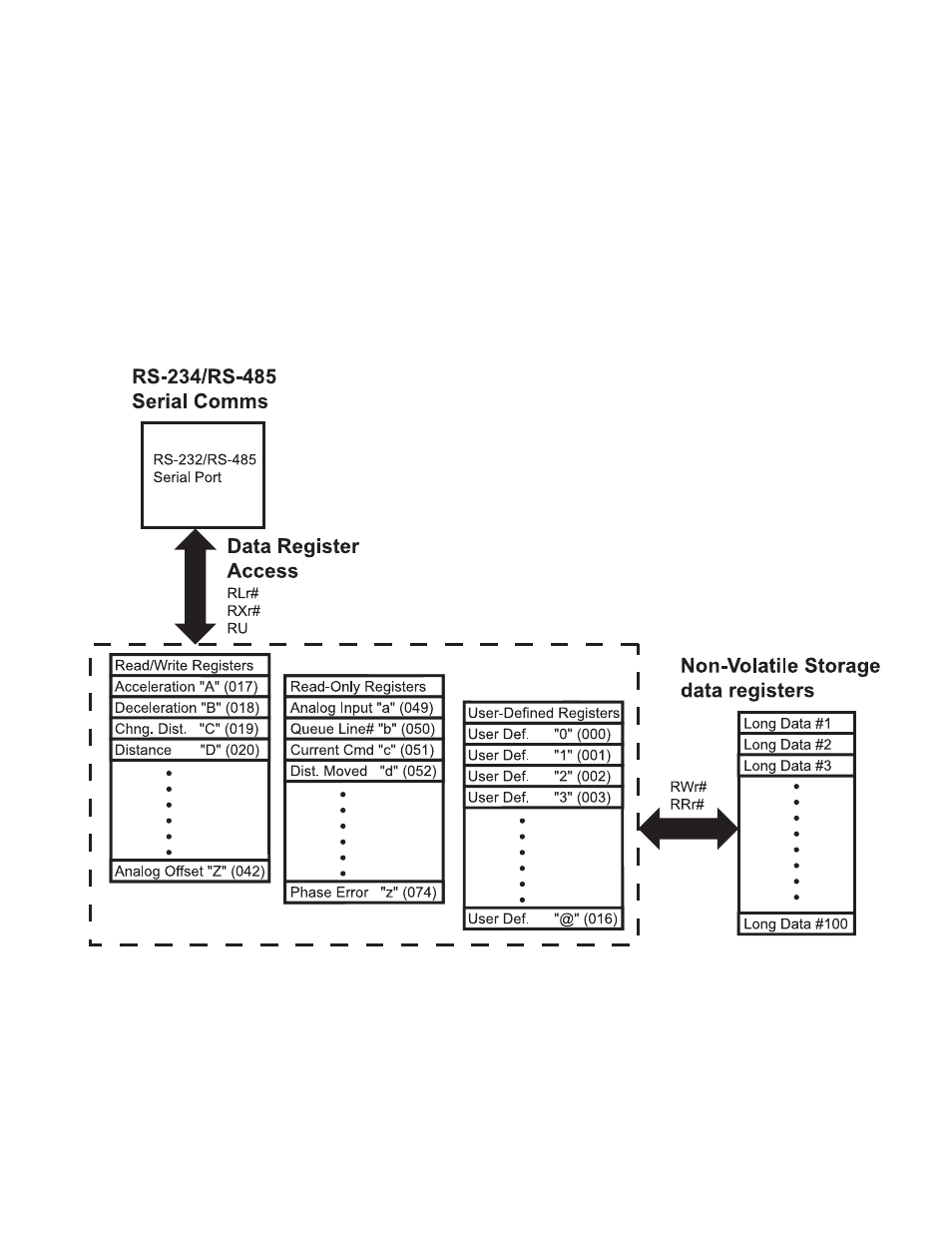Using data registers, Loading (rl, rx) – Applied Motion RS-232 User Manual
Page 227

227
920-0002 Rev. I
2/2013
Host Command Reference
power up, these values can be loaded back into the User-Defined registers from the Storage registers (called
Reading). Each Storage register can save one data register value, and the Storage registers are numbered 1 to
100. See the RR, RW, and SA commands as well as the Appendix for more information on accessing this section
of memory.
Using Data Registers
The diagram below shows how a drive’s serial port accesses the different volatile (Read-Only, Read/Write,
User-Defined) and non-volatile (Storage) data registers within a drive. The user can Load and Upload data
register values using the RL, RX, and RU commands via the drive’s serial port(s). Read-Only data registers can
be uploaded but not loaded. For Q drives only, non-volatile memory is available for data registers in the form
of Storage registers. Moving the contents of the volatile data registers back and forth between the non-volatile
Storage registers is done with the RW and RR commands. See below for more details.
Loading (RL, RX)
Accessing data registers is done by Loading data into a register, and Uploading data from a register.
Loading a data register can be done from a host command line or from a line in a program. To load a register
from a host command line use the RL (Register Load) command. This command can be executed at any time,
even while a drive is running a program. The RL command is an immediate command. To load a register within a
Q program use the RX command, which is a buffered version of Register Load.